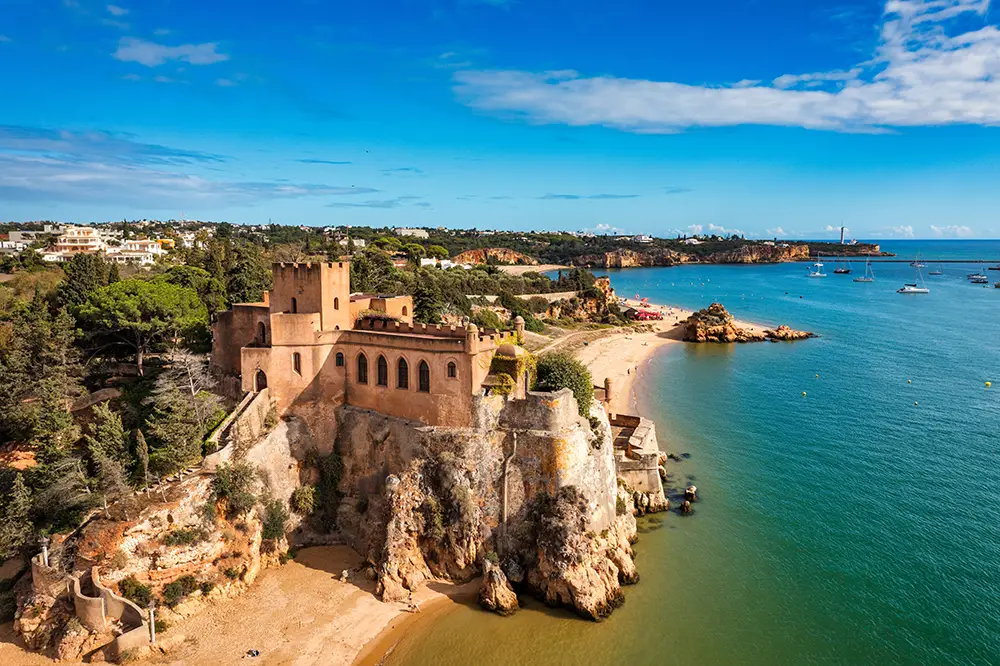
A Guide for Irish Tourists Driving in the Algarve
Sun, Sand, and Steering Wheels
If you're an Irish traveller heading to Portugal’s sunny southern coast, you’re in for a real treat. The Algarve is one of Europe’s most spectacular holiday destinations, offering golden beaches, dramatic cliffs, historic towns, and delicious seafood – all served with a generous helping of sunshine. And while public transport can get you to the bigger towns, renting a car from Faro Airport is the best way to explore the hidden gems scattered along the coastline and into the rolling countryside.
Here’s your friendly guide to hitting the road in the Algarve – with tips, local driving rules, and everything you need to know to make the most of your Portuguese road trip.
Landing in Faro and Picking Up Your Car
Faro Airport is the main gateway to the Algarve and is well-serviced by flights from Dublin, Cork, and Shannon, especially in the summer months. Once you land and make your way through arrivals, you’ll find several international and local car rental companies in and around the airport. Booking in advance (especially during peak season) is highly recommended for the best prices and selection.
Bring your valid Irish driving licence (no need for an international permit), passport, and a credit card in the name of the main driver – these are typically required to pick up your car.
Check the car thoroughly, including tyres and make sure all existing damage is correctly identified on the documentation, you do not want to be paying for other renter's damage! Pro Tip: Check the insurance coverage included in your rental and consider adding Questor's Car Rental Excess Insurance for peace of mind. Some roads in the Algarve are narrow, and the odd scrape can happen!
Getting Used to Driving in Portugal
Driving in Portugal isn’t too different from Ireland – but there are a few key differences to be aware of: -
- Drive on the right: This one’s the biggie. Unlike in Ireland, in Portugal you drive on the right and overtake on the left. It can feel a little strange at first, but most people adjust quickly – especially on motorways.
- Roundabouts work differently: The rule is to give way to traffic already on the roundabout (as in Ireland), but vehicles on the roundabout must signal right if they are exiting. Expect a slightly more assertive style from local drivers – stay calm and confident.
- Speed limits: Stick to the following unless otherwise posted:
- 50 km/h in towns
- 90 km/h on open roads
- 120 km/h on motorways (autoestradas)
Speeding fines can be hefty and roadside police checks are not uncommon, so take it easy.
- Drink-driving laws are stricter: The legal blood alcohol limit is 0.05% – lower than Ireland’s. That’s about one small beer or glass of wine, but the safest option is always to avoid alcohol entirely if you're driving.
- Headlights on in tunnels: It’s mandatory – and there are quite a few tunnels in the region.
- Toll roads: Some motorways in the Algarve (like the A22) are tolled using an electronic system with automatic number plate recognition. Many hire cars come equipped with a transponder, and charges will be billed to your card after the trip. Ask your rental company how their system works to avoid surprises.
Exploring the Algarve by Car
With your rental car ready and your GPS set, you’re free to roam. Some must-visit spots by car include: -
- Lagos: A charming town with cobbled streets, great restaurants, and access to stunning beaches like Praia Dona Ana.
- Sagres: At the far western tip of the Algarve, Sagres feels wild and windswept – perfect for sunsets and surf.
- Monchique Mountains: A gorgeous drive inland through forests and hills, offering cooler air and stunning views.
- Tavira: East of Faro, this pretty riverside town is steeped in history and a bit more off the beaten tourist track.
Having a car also means you can beach-hop freely – the Algarve coastline is peppered with coves, caves, and scenic cliffs. Don’t miss the Benagil Cave, one of the region’s most iconic sights (accessible by boat or kayak – you’ll need to park nearby).
Parking and Petrol
Parking is generally easy in smaller towns and villages, though coastal hotspots like Albufeira and Lagos can be trickier in peak season. Look for "P" signs for official parking areas. White lines usually mean free parking, blue zones require payment (look for a nearby meter), and yellow lines mean no parking.
Petrol stations are plentiful, and most take card payments. Just remember that petrol is called "gasolina" and diesel is "gasóleo" – double-check before filling up!
Final thoughts
Driving in the Algarve opens up a whole world of experiences that are hard to reach by bus or train. From sunrise swims at quiet beaches to vineyard lunches in the hills, having a car gives you the freedom to shape your own adventure.
Just take it easy, watch those roundabouts, and enjoy the ride – you’re on holiday, after all. And once you’ve experienced Portugal’s laid-back lifestyle and warm hospitality, you’ll be planning your return trip before the wheels stop turning.
Boa viagem – and don’t forget the sunscreen!

